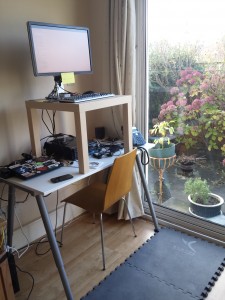Many people head home to family at some point over the holiday season, whether that be like today for Thanksgiving in the US, Christian Christmas at the end of December or one of the many and varied holidays. During that time most people that are technical will be asked to help fix or setup various computer or internet related devices that family members that are not so technical have acquired or broken since the last time they ventured home. For me it use to be the regular upgrade/replacement of the Virus Scan and anti malware software. These days it tends to be patching of phones and tablets and all sorts of other devices.
So what can the average technical person do to help minimise risks to family members, or stop them from being part of a large botnet sometime in the future, without making the technology hard or even impossible for family to use, or to minimise the calls throughout the year.
Router
The first port of call should always be the router. Often these just get stuffed in the corner, on a bookshelf or somewhere out of site and forgotten. From a security point of view they are the most important, they are the thing that primarily protects everything else as they’re the ingress/egress point of the network. So what to do and change on these devices:
- Upgrade the firmware to the latest supported version, and configure it to auto-upgrade if it’s an option. If the last firmware is ancient consider moving to a third party firmware like LEDE Project or an OpenWRT dirivative. Worst case scenario throw it away and give them a new one as their present.
- Change the admin password.
- Change the SSID and set a reasonable password.
- Ensure that the admin interface isn’t available on the WAN link, do a port scan.
- Turn off port forwarding and UPnP on the router.
- Switch it to OpenDNS (208.67.222.222 208.67.220.220), Google Public DNS (8.8.8.8 4.4.4.4), the new Quad9, or even better a combination of them so if one service goes down or disappears their internet will still work.
Phones and Tablets
Ensure the phone is set to auto install new OS firmware releases, also ensure that apps are set to auto update and that if the provider, such as Google Play, has a malware scan option in their App store ensure that’s turned on so it’ll clean up any apps that are discovered to be problematic.
TVs, Bluerays and other Media Players
It’s surprising the number of these devices that have network connections and never get updated. In some cases the network functionality is rarely, if ever used, I know I’ve pretty much disconnected all Blu-ray players from networks, turned off the wireless if it has it, and not ever had a complaint. Often it’s better to replace some of old network media devices with ones that are actively maintained such as Google Chromecast, Amazon Fire, Roku etc. It’s also worth checking if any of these devices have the ability to connect to via ad-hoc means and disable that to limit connections to only those that are on the standard home network.
Various IoT devices
IoT devices should generally, if at all possible, be isolated on their own network. This is easy if as part of securing the router you moved it to LEDE or something similar above, and configure it to have a strict deny-by-default policy. Check the existing network for devices that are connected to it. In some cases there may have been a device connected to it some time ago that have long been forgotten about and are no longer in use, or the manufacturer has ceased to exist and they’re just a compromise waiting to happen masquerading as an expensive paperweight. Those that are in use might not be using the IoT/network functionality, if so turn the network off. Those that remain obviously ensure they’re running the latest firmware, set for auto update, and if possible move them to the IoT network. In some cases it might be possible or better to replace connected lighting if it’s some terrible WiFi/Bluetooth globe with something like the IKEA TRÅDFRI system as it has reasonable security, is of good quality and is affordable. Also don’t forget to check for things like doorbells, locks, cameras and other such devices.
Conslusion
Securing the router and associated DNS is by far and large the most important thing to do, it will help mitigate/protect most of the other problems that loom on the inside. But disconnecting, throwing away, replacement of old devices is sometimes the easiest way to fix them too, or else isolating them.
Let me know what else people do, and what I missed.
